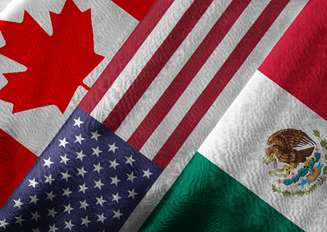By Adrienne Braumiller, BLG Founding Partner
May has come and gone, but NAFTA 2.0 remains in the lurch. House Speaker, Paul Ryan, had expressed the need for NAFTA to be negotiated by mid-May for Congress to be able to have a sufficient amount of time to vote and finalize it. Not to mention, the Mexico Presidential election takes place on July 1, the same day that Congress decides whether to renew the President’s Trade Promotion Authority that allows the President to directly negotiate trade deals as long as he keeps Congress informed and they approve the final terms.
With some deadlines passed without an end to negotiations in sight, and with others still looming, all eyes are on the next plan of action. There were rumblings of Trump settling for a “NAFTA-lite,” or an agreement in principle, to allow Congress to pass something, but President Trump has made it clear that he does not mind extending negotiations into 2019, if necessary. The upcoming risks are this: possibly having to deal with a Mexican President who takes a harder stance on some NAFTA key issues and the possible loss of a Republican majority in Congress that might be less willing to pass new NAFTA terms.
Why the Hold Up?
By now, we all know the U.S. has demanded unpopular terms from the new NAFTA. These include:
- Making the investor-state dispute settlement system optional – not having an unbiased dispute mechanism in place could deter U.S. investment firms from investing in Mexico or Canada. If a dispute abroad were to arise, the U.S. firm would be at a loss for resolution, thus discouraging investments abroad and steering domestic investment instead.
- Raising the percentage of North American content in autos from 62.5% to upwards of 75% – Mexico and Canada have rejected this notion, but Mexico has proposed a counter-offer of raising North American content to 70% with a 10- year phase-in, if the U.S. would be willing to make concessions on the investor-state dispute settlement system, seasonal tariffs, and sunset clause.
- Requiring that 40% of labor on autos be done by workers making at least $16/hour in wages – Mexico was willing to move on this point by proposing a required percentage of autos to be made with American steel and aluminum OR meeting the wage demand, but not both.
- Implementing a sunset clause for NAFTA, requiring the agreement to be renewed every 5 years – This point appears to be a sticking point for Mexico and Canada, perhaps given the length of the current negotiation process.
- Introducing seasonal anti-dumping tariffs on certain produce aimed at protecting domestic producers, but possibly raising prices for domestic consumers – Mexico and Canada are against this proposal because fruit and vegetable exporters would have to pay anti-dumping duties every time the certain fruit and vegetable fell out of season in the U.S.
U.S.-China Trade War
At the end of May, President Trump decided to impose Section 301 tariffs on billions of dollars’ worth of Chinese products despite the agreement by Chinese trade officials to open their markets to more of the U.S. goods. The list of the Chinese products that will be subject to new 25 per cent tariffs is expected on June 15th while new restrictions on Chinese investment in US technology and tighter export controls are expected by the end of the month.
President Trump had earlier expressed interest in reviving talks about the Trans Pacific Partnership, which he pulled the United States out of, but these most recent developments with China might make this a moot point, as the TPP talks were likely going to be a pressuring tactic. The rationale here was that by partnering with practically all other East Asia countries for trade, China would feel like the outsider and want to make some deals. Alas, China’s willingness to negotiate with the United States has happened irrespective of United States TPP talks, so it is currently unknown if the President will want to revive those talks after all.
KORUS Update
The Korean-U.S. free trade agreement has reached an agreement in principle that implements a couple of new terms while amending a few existing terms:
- Korea will be permanently exempt from the Section 232 tariffs on steel and aluminum in exchange for capping their steel exports at 70% of what they have been averaging over the last 3 years.
- The U.S. can now export up to 50,000 vehicles per manufacturer to Korea, up from 25,000 per manufacturer; however, in 2017, Ford and GM only exported 10,000 vehicles each to Korea. Although markets may open, the question remains if U.S. producers will take advantage.
- Regarding imports of light trucks, the U.S. and Korea have agreed to extend a 25% tariff that was set to expire in 2021 to now expire in 2041, further deterring Korean truck exports.
- The new agreement equalizes U.S. and Korean emissions testing so autos will not have to be tested twice.
- Korea will now offer the U.S. premium pricing on new drugs, combatting the effects of Korea’s cheap drug prices.
Of course, in any international update at this time one must mention the historical meeting between President Trump and Kim Jong Un in Singapore. According to President Trump, it was a very successful meeting, where he said a bond was formed with the N. Korean leader. Kim committed to denuclearization, while President Trump agreed to stop the military drills with S. Korea. Both leaders stated that they wanted to “leave the past behind.” Major steps for both nations now have been delivered as promises, with a more detailed outline to follow, possibly in many more meetings between the two in the near future. The world is watching. In the meantime, it’s the status quo, and N. Korean sanctions remain in place, but stay tuned for updates.

























